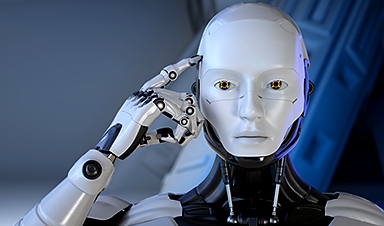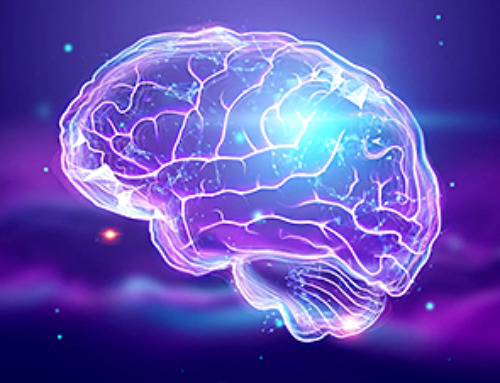Artificial intelligence (AI) systems are often depicted as sentient agents poised to overshadow the human mind. But AI lacks the crucial human ability of innovation, researchers at the University of California, Berkeley have found.
AI language models like ChatGPT are passively trained on data sets containing billions of words and images produced by humans. This allows AI systems to function as a “cultural technology” similar to writing that can summarize existing knowledge, Eunice Yiu, a co-author of the article, explained in an interview. But unlike humans, they struggle when it comes to innovating on these ideas, she said.
“Even young human children can produce intelligent responses to certain questions that [language learning models] cannot,” Yiu said. “Instead of viewing these AI systems as intelligent agents like ourselves, we can think of them as a new form of library or search engine. They effectively summarize and communicate the existing culture and knowledge base to us.”
Yiu and Eliza Kosoy, along with their doctoral advisor and senior author on the paper, developmental psychologist Alison Gopnik, tested how the AI systems’ ability to imitate and innovate differs from that of children and adults. They presented 42 children ages 3 to 7 and 30 adults with text descriptions of everyday objects.
In the first part of the experiment, 88% of children and 84% of adults were able to correctly identify which objects would “go best” with another. For example, they paired a compass with a ruler instead of a teapot.
In the next stage of the experiment, 85% of children and 95% of adults were also able to innovate on the expected use of everyday objects to solve problems. In one task, for example, participants were asked how they could draw a circle without using a typical tool such as a compass.
Given the choice between a similar tool like a ruler, a dissimilar tool such as a teapot with a round bottom, and an irrelevant tool such as a stove, the majority of participants chose the teapot, a conceptually dissimilar tool that could nonetheless fulfill the same function as the compass by allowing them to trace the shape of a circle.
When Yiu and colleagues provided the same text descriptions to five large language models, the models performed similarly to humans on the imitation task, with scores ranging from 59% for the worst-performing model to 83% for the best-performing model. The AIs’ answers to the innovation task were far less accurate, however. Effective tools were selected anywhere from 8% of the time by the worst-performing model to 75% by the best-performing model.
“Children can imagine completely novel uses for objects that they have not witnessed or heard of before, such as using the bottom of a teapot to draw a circle,” Yiu said. “Large models have a much harder time generating such responses.”
In a related experiment, the researchers noted, children were able to discover how a new machine worked just by experimenting and exploring. But when the researchers gave several large language models text descriptions of the evidence that the children produced, they struggled to make the same inferences, likely because the answers were not explicitly included in their training data, Yiu and colleagues wrote.
These experiments demonstrate that AI’s reliance on statistically predicting linguistic patterns is not enough to discover new information about the world, Yiu and colleagues wrote.
“AI can help transmit information that is already known, but it is not an innovator,” Yiu said. “These models can summarize conventional wisdom, but they cannot expand, create, change, abandon, evaluate, and improve on conventional wisdom in the way a young human can.”
The development of AI is still in its early days, though, and much remains to be learned about how to expand the learning capacity of AI, Yiu said. Taking inspiration from children’s curious, active, and intrinsically motivated approach to learning could help researchers design new AI systems that are better prepared to explore the real world, she said.
More information: Eunice Yiu et al, Transmission Versus Truth, Imitation Versus Innovation: What Children Can Do That Large Language and Language-and-Vision Models Cannot (Yet), Perspectives on Psychological Science (2023). DOI: 10.1177/17456916231201401
News
New Once-a-Week Shot Promises Life-Changing Relief for Parkinson’s Patients
A once-a-week shot from Australian scientists could spare people with Parkinson’s the grind of taking pills several times a day. The tiny, biodegradable gel sits under the skin and releases steady doses of two [...]
Weekly injectable drug offers hope for Parkinson’s patients
A new weekly injectable drug could transform the lives of more than eight million people living with Parkinson's disease, potentially replacing the need for multiple daily tablets. Scientists from the University of South Australia [...]
Most Plastic in the Ocean Is Invisible—And Deadly
Nanoplastics—particles smaller than a human hair—can pass through cell walls and enter the food web. New research suggest 27 million metric tons of nanoplastics are spread across just the top layer of the North [...]
Repurposed drugs could calm the immune system’s response to nanomedicine
An international study led by researchers at the University of Colorado Anschutz Medical Campus has identified a promising strategy to enhance the safety of nanomedicines, advanced therapies often used in cancer and vaccine treatments, [...]
Nano-Enhanced Hydrogel Strategies for Cartilage Repair
A recent article in Engineering describes the development of a protein-based nanocomposite hydrogel designed to deliver two therapeutic agents—dexamethasone (Dex) and kartogenin (KGN)—to support cartilage repair. The hydrogel is engineered to modulate immune responses and promote [...]
New Cancer Drug Blocks Tumors Without Debilitating Side Effects
A new drug targets RAS-PI3Kα pathways without harmful side effects. It was developed using high-performance computing and AI. A new cancer drug candidate, developed through a collaboration between Lawrence Livermore National Laboratory (LLNL), BridgeBio Oncology [...]
Scientists Are Pretty Close to Replicating the First Thing That Ever Lived
For 400 million years, a leading hypothesis claims, Earth was an “RNA World,” meaning that life must’ve first replicated from RNA before the arrival of proteins and DNA. Unfortunately, scientists have failed to find [...]
Why ‘Peniaphobia’ Is Exploding Among Young People (And Why We Should Be Concerned)
An insidious illness is taking hold among a growing proportion of young people. Little known to the general public, peniaphobia—the fear of becoming poor—is gaining ground among teens and young adults. Discover the causes [...]
Team finds flawed data in recent study relevant to coronavirus antiviral development
The COVID pandemic illustrated how urgently we need antiviral medications capable of treating coronavirus infections. To aid this effort, researchers quickly homed in on part of SARS-CoV-2's molecular structure known as the NiRAN domain—an [...]
Drug-Coated Neural Implants Reduce Immune Rejection
Summary: A new study shows that coating neural prosthetic implants with the anti-inflammatory drug dexamethasone helps reduce the body’s immune response and scar tissue formation. This strategy enhances the long-term performance and stability of electrodes [...]
Scientists discover cancer-fighting bacteria that ‘soak up’ forever chemicals in the body
A family of healthy bacteria may help 'soak up' toxic forever chemicals in the body, warding off their cancerous effects. Forever chemicals, also known as PFAS (per- and polyfluoroalkyl substances), are toxic chemicals that [...]
Johns Hopkins Researchers Uncover a New Way To Kill Cancer Cells
A new study reveals that blocking ribosomal RNA production rewires cancer cell behavior and could help treat genetically unstable tumors. Researchers at the Johns Hopkins Kimmel Cancer Center and the Department of Radiation Oncology and Molecular [...]
AI matches doctors in mapping lung tumors for radiation therapy
In radiation therapy, precision can save lives. Oncologists must carefully map the size and location of a tumor before delivering high-dose radiation to destroy cancer cells while sparing healthy tissue. But this process, called [...]
Scientists Finally “See” Key Protein That Controls Inflammation
Researchers used advanced microscopy to uncover important protein structures. For the first time, two important protein structures in the human body are being visualized, thanks in part to cutting-edge technology at the University of [...]
AI tool detects 9 types of dementia from a single brain scan
Mayo Clinic researchers have developed a new artificial intelligence (AI) tool that helps clinicians identify brain activity patterns linked to nine types of dementia, including Alzheimer's disease, using a single, widely available scan—a transformative [...]
Is plastic packaging putting more than just food on your plate?
New research reveals that common food packaging and utensils can shed microscopic plastics into our food, prompting urgent calls for stricter testing and updated regulations to protect public health. Beyond microplastics: The analysis intentionally [...]





















